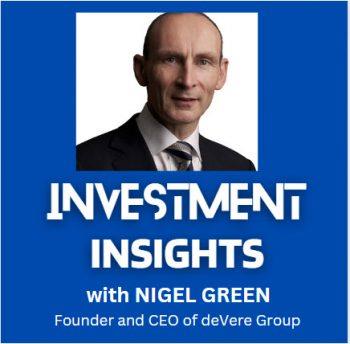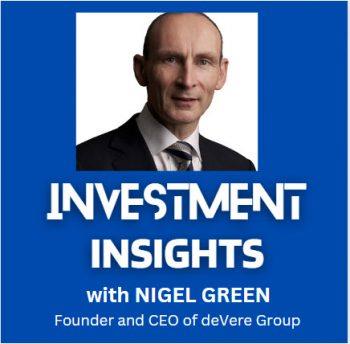
US Growth And Sticky Inflation Keep Dollar On Top

Currency markets sent a resounding message last week: the US remains the dominant force in the global economy.
The dollar surged to a two-year high against the euro, which fell to $1.0267, and reached an eight-month peak against sterling, with the pound dropping to $1.2354, which is its lowest level since late April.
This sharp rally reflected a growing belief among investors that the US economy's resilience and persistent inflation will limit how quickly the Federal Reserve eases monetary policy, bolstering the dollar's demand against its major counterparts.
The robust US jobs data that sparked this shift was more than just another positive report.
It affirmed a narrative that has been building throughout the year: the US labour market remains strong, and inflationary pressures-though reduced from their peaks-are far from eradicated.
This combination is forcing investors to recalibrate expectations for rate cuts, especially as central banks in Europe and the UK face more immediate economic headwinds.
The dollar's surge is underpinned by two critical factors: growth and reliability.
First, the US economy is simply outperforming its peers. Consumer spending remains robust, unemployment is near historic lows, and productivity is holding steady.
In contrast, the eurozone is grappling with stagnation, and the UK is contending with structural weaknesses, including weak business investment and a simmering cost-of-living crisis.
Second, the dollar's status as a safe haven reinforces its appeal. In times of uncertainty, global investors flock to the greenback-and today's uncertainties are manifold.
Geopolitical tensions, questions about energy security, and lingering concerns over global debt sustainability have elevated the dollar's allure.
See alsoHow diet drugs are transforming investments for 2025
This rally has been reflected in the dollar index, which tracks the greenback against a basket of six major currencies.
Last week, the index climbed 1.1%, marking its best weekly performance in over a month. Investors seeking stability in an unpredictable world are finding solace in the dollar's unmatched liquidity and strength.
Sticky inflation and the Fed's dilemma
For months, market participants have anticipated a rapid reversal of monetary tightening as inflation moderated and growth slowed. However, last week's moves suggest a reassessment. The US labor market's resilience is accompanied by sticky inflation in services and other core areas, which leaves the Federal Reserve in a tricky position.
While some inflation data has cooled, the underlying pressures remain sufficient to keep the Fed cautious.
This environment stands in stark contrast to Europe and the UK. The European Central Bank is signalling concerns about a slowing economy, while the Bank of England faces mounting criticism over high borrowing costs' impact on households and businesses.
With inflation less entrenched and growth more fragile, rate cuts could arrive sooner in these economies. This divergence only adds to the dollar's appeal.
Implications for investors
For investors, the dollar's strength is a double-edged sword.
On one hand, it enhances the attractiveness of US assets. Multinational corporations with dollar-denominated revenues and costs in weaker currencies are poised to benefit, with profit margins likely to expand. Meanwhile, US equities and real estate continue to draw foreign investment, offering a safe harbour in uncertain times.
On the other hand, exporters in the eurozone and UK face increased headwinds.
See alsoHow diet drugs are transforming investments for 2025
A stronger dollar makes their goods relatively more expensive, deepening the challenges for economies already on shaky ground. Furthermore, emerging markets, often reliant on dollar-denominated debt, will need to navigate this environment carefully to avoid destabilisation.
However, investors shouldn't ignore the cyclical nature of currency markets. While the dollar's dominance seems unassailable for now, these dynamics can shift swiftly. Diversifying exposure remains critical, particularly as emerging market currencies could begin to stabilise and present potential opportunities.
I believe that last week's moves were not an anomaly-they were a reflection of shifting expectations in global markets.
The US economy's resilience is forcing investors to reassess their assumptions about the Fed's path, with rate cuts looking increasingly distant. In the meantime, the dollar's position as the most reliable store of value in the developed world is becoming even more entrenched.
For investors, the takeaway is clear: the US remains the powerhouse of global growth, and the dollar is likely to remain the currency of choice for the foreseeable future.
It's a time to reevaluate strategies and embrace the opportunities created by the greenback's strength in an evolving global economy.
Also published on Medium .
Notice an issue?
Arabian Post strives to deliver the most accurate and reliable information to its readers. If you believe you have identified an error or inconsistency in this article, please don't hesitate to contact our editorial team at editor[at]thearabianpost[dot]com . We are committed to promptly addressing any concerns and ensuring the highest level of journalistic integrity.
ADVERTISEMENT
Legal Disclaimer:
MENAFN provides the information “as is” without warranty of any kind. We do not accept any responsibility or liability for the accuracy, content, images, videos, licenses, completeness, legality, or reliability of the information contained in this article. If you have any complaints or copyright issues related to this article, kindly contact the provider above.






















Comments
No comment